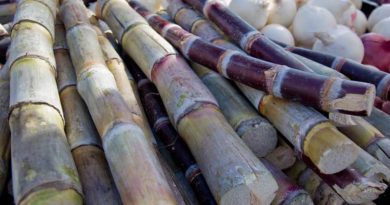In Punjab, a bitter-sweet success: area under sugarcane dips, sugar content in crop goes up
30 March 2022, Punjab: Punjab this year recorded more sugarcane recovery compared to last year even as the area under production has decreased over the past few years. The major reason behind the decreasing area is delayed payments of cane by several sugar mills.
This year, the total area under the crop was 88,000 hectares (2,17,360 acres) and the average yield per hectare was 835.92 quintals (338.42 quintals per acre), which is second highest in the history of the state. Till March 27, 16 sugar mills of the state, including nine in cooperative sector and seven in private, have crushed 596.7 lakh quintals of cane and produced 54.5 lakh quintals of sugar by getting 9.31% sugar per quintal against 9.02% last year.
This year, the rate of sugarcane is Rs 360 per quintal for the early variety, 350 per quintals and 345 per quintal for medium and late varieties, respectively, which is Rs 50 per quintal more for all varieties compared to last year. Farmers had organised massive protests, following which the government had enhanced sugarcane prices in the state that were static for around four years.
This season total Rs 2,130.63 crore is to be paid to the sugarcane growers of which Rs 1,263.5 crores has been paid till March 27 and the remaining Rs 867.13 crores are still lying pending towards sugar mills.
Also mills are yet to pay the pending balance of Rs 7.71 crore and Rs 30.57 crore for the year 2020-21 and 2019-20, respectively. And with this, over Rs 900 crore have been pending towards sugar mills.
When Punjab is contemplating to increase the area under the crop upto 2 lakh hectares the area under the crop is falling for the past five years continuously. The area under cane in 2017-18 was 97,000 hectares which decreased to 95,000 hectares in 2018-19, 91,000 hectares in 2019-20, 89,000 hectares in 2020-21 and this season it was 88,000 hectares only.
But despite the decreasing area, the yield of cane per hectare is increasing and it has recorded above 800 quintals cane production per hectares in the past five years with highest 838.41 quintals/hectare in 2020-21 and second highest this year. Also in 2017-18, the production was 833 quintals cane per hectares. The sugar recovery had also been 9.52% in 2018-19 and 9.31% this year.
“Farmers want to increase area under cane production but they are discouraged when their dues are not cleared on time and then they have to resort to protests to recover their dues,” said Satnam Singh Sahni, general secretary of Bharti Kisan Union, Doaba, which has the large number of cane growers as its member Sahni added that earlier there used to be huge area under the crop but farmers are gradually shifting to other crops as their dues are not being cleared.
Cane expert Paramjit Singh Sooch, who is the former board member of Bhogpur Sugar Mill and has played a major role in the upgradation of the mill by taking up the matter again and again with the authorities, said that sugarcane production can be made profitable in the state if the government focuses on revamping cooperative sugar mills by enhancing their capacity, setting up power cogenerations and ethanol.
The records available with the Punjab Agriculture University (PAU), Ludhiana, revealed that in 1996-97, Punjab had the highest 1.73 lakh hectares under cane and that was almost double the area that the state currently has. Also, that year the total production of cane was 948 lakh quintals. Apart from this, the state had recorded good area under the crop in 1965-66 when it was 1.67 lakh hectares, in 1995-96 (1.36 lakh hectares), 1960-61 (1.33 lakh hectares), 1970-71 (1.28 lakh hectares), 2000-01 (1.21 lakh hectares), 2007-08 (1.08 lakh hectares).
In the remaining years, it was less than one lakh hectares with lowest area the crop was having only 60,000 hectares in 2009-10 which rose to 97,000 hectares in 2017-18 again and is now again on the decline.
Meanwhile, Punjab has increased the per hectare yield from 340 quintals per hectares in 1960-61 to 838.41 quintals per hectares last year.
In Punjab, more than 70% cane is crushed by seven private mills because of the low capacity of state owned cooperative mills.
Also Read: nurture.farm introduces weather-based financial protection program KAVACH for Indian farmers















